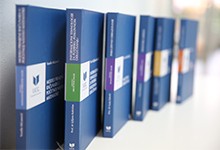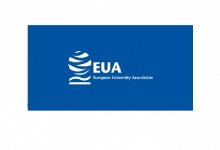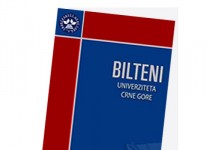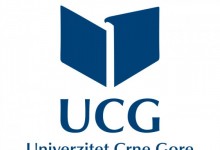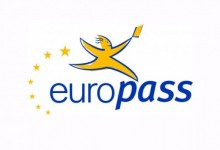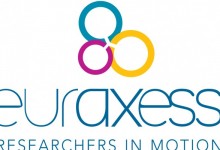Faculty of Metalurgy and Technology / CHEMICAL TECHNOLOGY / HEMIJA ČVRSTOG STANJA
| Course: | HEMIJA ČVRSTOG STANJA/ |
| Course ID | Course status | Semester | ECTS credits | Lessons (Lessons+Exercises+Laboratory) |
| 9910 | Izborni | 1 | 7 | 3+1+1 |
| Programs | CHEMICAL TECHNOLOGY |
| Prerequisites | There is no requirement to register and listen to the case. |
| Aims | The aim of the course is to provide students with theoretical and practical knowledge of advanced methods of synthesis and characterization of substances in a solid aggregate state |
| Learning outcomes | • describes advanced methods of synthesis and characterization of substances in the solid state. • Choose the right method of synthesis, as well as the methods of characterization with the aim of describing the structure and properties of selected inorganic substances. • interpret the results of X-ray structural analysis of simple crystal structures inorganic and organic substances. |
| Lecturer / Teaching assistant | Prof dr Željko Jaćimović |
| Methodology | Lectures , experimental exercises, seminar papers (writing and defense), finding newer literature |
| Plan and program of work | |
| Preparing week | Preparation and registration of the semester |
| I week lectures | Introduction to Solid State Chemistry |
| I week exercises | Symmetric diagrams. Symmetry groups of points |
| II week lectures | Crystal structures |
| II week exercises | Directions and levels |
| III week lectures | Types of solids |
| III week exercises | 2D, 3D grids, reciprocal grid concept |
| IV week lectures | Some important structural types |
| IV week exercises | Flat groups. Spatial groups and spatial group diagrams |
| V week lectures | Solid-state connections |
| V week exercises | Interaction of X-rays with matter. Theoretical approach in the interpretation of diffraction |
| VI week lectures | Methods of obtaining |
| VI week exercises | X-ray structural analysis (monocrystals and powders) |
| VII week lectures | 1. Colloquium |
| VII week exercises | The result of solving the acrystalline structure . Types and validation of structural methods |
| VIII week lectures | Methods of characterization. Correction1. Colloquium |
| VIII week exercises | Packaging in crystal structures |
| IX week lectures | Crystallography and diffraction techniques |
| IX week exercises | Solving crystal structures and simple organic and inorganic molecules |
| X week lectures | Other techniques: microscopy, spectroscopy |
| X week exercises | Crystallographic programs and databases |
| XI week lectures | Thermal methods of analysis |
| XI week exercises | Interpretation of a result of thermal analysis |
| XII week lectures | 2nd colloquium |
| XII week exercises | Division of topics for seminar papers |
| XIII week lectures | Crystal defects, non-stoichiometric materials and solid solutions. Remedial 2nd Colloquium |
| XIII week exercises | Defense of seminar papers |
| XIV week lectures | Electrical properties |
| XIV week exercises | Defense of seminar papers |
| XV week lectures | Magnetic and other features. |
| XV week exercises | Defense of seminar papers |
| Student workload | Per week 5 credits x 40/30 = 7 hours and 5 minutes Structure: 2 hours of lectures 2 hours of exercise 7 hours and 5 minutes of individual work of students (preparation for laboratory exercises, for colloquiums, homework) including consultations In the semester Teaching and final exam: (7 hours and 5 min) x16= 113 hours and 20 min Necessary preparation before the beginning of the semester (administration, enrollment, certification) 2 x (7 hours and 5 min) = 14 hours and 10 minutes Total load for the subject 5x30 = 150 hours Supplementary work for exam preparation in the makeup exam period, including passing the makeup exam from 0 - 48 hours. Load structure: 113 hours and 20 min (classes) + 13 hours and 20 min (preparation) + 30 hours (supplementary work): |
| Per week | Per semester |
| 7 credits x 40/30=9 hours and 20 minuts
3 sat(a) theoretical classes 1 sat(a) practical classes 1 excercises 4 hour(s) i 20 minuts of independent work, including consultations |
Classes and final exam:
9 hour(s) i 20 minuts x 16 =149 hour(s) i 20 minuts Necessary preparation before the beginning of the semester (administration, registration, certification): 9 hour(s) i 20 minuts x 2 =18 hour(s) i 40 minuts Total workload for the subject: 7 x 30=210 hour(s) Additional work for exam preparation in the preparing exam period, including taking the remedial exam from 0 to 30 hours (remaining time from the first two items to the total load for the item) 42 hour(s) i 0 minuts Workload structure: 149 hour(s) i 20 minuts (cources), 18 hour(s) i 40 minuts (preparation), 42 hour(s) i 0 minuts (additional work) |
| Student obligations | Students are obliged to do all laboratory exercises provided for in the plan, do and defend the seminar work.. |
| Consultations | Prof dr Željko Jaćimović- after lessons |
| Literature | 1. Basic solid state chemistry, R.West,1999., John Wiley Sons, Ltd., 2. Lj. Karanović, D. Poleti: X-ray structural analysis, Department of Textbooks and Teaching Aids, Belgrade, 2003. 3. B. Prelesnik, K. K. Anđelković, D. D. Radanović, T. R. Todorović: Collection of tasks in crystallography and X-ray structural analysis, Faculty of Chemistry, Belgrade, 2007. |
| Examination methods | Activities during lectures and exercises and submit reports : 5 points. - Seminar paper(s): 15 points - 1st colloquium: 15 points - 2nd colloquium: 15 points - Final exam 50 points The exam was passed with 50 points. |
| Special remarks | Laboratory exercises are performed in groups where max can be 12 students. |
| Comment |
| Grade: | F | E | D | C | B | A |
| Number of points | less than 50 points | greater than or equal to 50 points and less than 60 points | greater than or equal to 60 points and less than 70 points | greater than or equal to 70 points and less than 80 points | greater than or equal to 80 points and less than 90 points | greater than or equal to 90 points |
Faculty of Metalurgy and Technology / CHEMICAL TECHNOLOGY / NEORGANSKA HEMIJA III
| Course: | NEORGANSKA HEMIJA III/ |
| Course ID | Course status | Semester | ECTS credits | Lessons (Lessons+Exercises+Laboratory) |
| 9911 | Izborni | 1 | 7 | 3+1+1 |
| Programs | CHEMICAL TECHNOLOGY |
| Prerequisites | There is no requirement to register and listen to the case. |
| Aims | The aim of the course is for students, at a higher level, to get to know individual selected groups of compounds, their application properties and potential application |
| Learning outcomes | • He knows the most important groups of these compounds • It connects structure with properties and draws conclusions about application and potential application selected compounds. • Uses different methods and techniques of synthesis of selected groups of compounds depending on their Feature. |
| Lecturer / Teaching assistant | Prof. Željko Jaćimović |
| Methodology | Lectures , experimental exercises, seminar papers (writing and defense), finding newer literature |
| Plan and program of work | |
| Preparing week | Preparation and registration of the semester |
| I week lectures | More important groups of oxides, structure, obtaining ,properties and application |
| I week exercises | Major oxide groups, synthesis and characterization |
| II week lectures | More important groups of oxides, structure, obtaining ,properties and application |
| II week exercises | Major oxide groups, synthesis and characterization |
| III week lectures | More important groups of hydroxides, structure, obtaining , properties and application |
| III week exercises | Major hydroxide groups, synthesis and characterization |
| IV week lectures | More important groups of hydroxides, structure, obtaining , properties and application |
| IV week exercises | Major hydroxide groups, synthesis and characterization |
| V week lectures | Important groups of acids, structure, obtaining , properties and application |
| V week exercises | Important acid groups, synthesis and characterization |
| VI week lectures | Important groups of acids, structure, obtaining , properties and application |
| VI week exercises | Important acid groups, synthesis and characterization |
| VII week lectures | 1. Colloquium |
| VII week exercises | Correction1. Colloquium |
| VIII week lectures | Hydrides, Division and Traits |
| VIII week exercises | Characterization of hydrides |
| IX week lectures | Hydrides, Division and Traits |
| IX week exercises | Characterization of hydrides |
| X week lectures | Silicon compounds, structure, obtaining ,properties and application |
| X week exercises | More important silicon compounds, obtaining and characterization |
| XI week lectures | Silicon compounds, structure, obtaining ,properties and application |
| XI week exercises | More important silicon compounds, obtaining and characterization |
| XII week lectures | 2nd colloquium |
| XII week exercises | More important silicon compounds, obtaining and characterization. Remedial 2nd Colloquium |
| XIII week lectures | Aluminosilicates |
| XIII week exercises | Synthesis of selected aluminosilicates and their characterization |
| XIV week lectures | The most important compounds of d-elements |
| XIV week exercises | Synthesis of selected aluminosilicates and their characterization |
| XV week lectures | More important f-elements compounds |
| XV week exercises | Synthesis and characterization of selected d-element compounds |
| Student workload | Per week 7 credits x 40/30 = 9.33hours Lectures: 2 time Exercises: 2hours Individual student work: 6.5 hours of self-study In the semester Teaching and final exam: (9h and 33min)x16=152h and 48min Necessary preparation before the beginning of the semester (administration, enrollment, certification) 2 x (9h and 33min) = 19h and 06min Total load for object 7x30 = 210 hours Supplementary work for the preparation of exams in the makeup exam period including passing the makeup exam from 0-48 hours. Load structure: 152hours and 48 minutes (classes) + 19 hours and 06 minutes (preparation) + 38 hours and 06 minutes (supplementary work): |
| Per week | Per semester |
| 7 credits x 40/30=9 hours and 20 minuts
3 sat(a) theoretical classes 1 sat(a) practical classes 1 excercises 4 hour(s) i 20 minuts of independent work, including consultations |
Classes and final exam:
9 hour(s) i 20 minuts x 16 =149 hour(s) i 20 minuts Necessary preparation before the beginning of the semester (administration, registration, certification): 9 hour(s) i 20 minuts x 2 =18 hour(s) i 40 minuts Total workload for the subject: 7 x 30=210 hour(s) Additional work for exam preparation in the preparing exam period, including taking the remedial exam from 0 to 30 hours (remaining time from the first two items to the total load for the item) 42 hour(s) i 0 minuts Workload structure: 149 hour(s) i 20 minuts (cources), 18 hour(s) i 40 minuts (preparation), 42 hour(s) i 0 minuts (additional work) |
| Student obligations | Students are obliged to do all laboratory exercises provided for in the plan, do and defend the seminar work.. |
| Consultations | Prof dr Željko Jaćimović-after lessons |
| Literature | 1. Inorganic Chemistry, Schriver , Atkins, Oxford University press, 2010 2. Filipović, S. Lipanović, General and Organic Chemistry, Školska knjiga, Zagreb, 3. Nešić, J.Vučetić, Inorganic preparative chemistry 4. D. Poleti, General Chemistry part II/Chemistry of elements, TMF Belgrade 5. V. Češljević, V. Leovac, E. Ivegeš, Practicum of Inorganic Chemistry- part one, Faculty of Science of Novi Sad |
| Examination methods | Activities during lectures and exercises and submit reports : 5 points - Seminar paper(s): 15 points - 1st colloquium: 15 points - 2nd colloquium: 15 points - Final exam 50 points The exam was passed with 50 points. |
| Special remarks | Laboratory exercises are performed in groups where max can be 12 students. |
| Comment | - |
| Grade: | F | E | D | C | B | A |
| Number of points | less than 50 points | greater than or equal to 50 points and less than 60 points | greater than or equal to 60 points and less than 70 points | greater than or equal to 70 points and less than 80 points | greater than or equal to 80 points and less than 90 points | greater than or equal to 90 points |
Faculty of Metalurgy and Technology / CHEMICAL TECHNOLOGY / ELECTROCHEMICAL POWER SOURCES - FUEL CELLS
| Course: | ELECTROCHEMICAL POWER SOURCES - FUEL CELLS/ |
| Course ID | Course status | Semester | ECTS credits | Lessons (Lessons+Exercises+Laboratory) |
| 9912 | Izborni | 2 | 7 | 3+1+1 |
| Programs | CHEMICAL TECHNOLOGY |
| Prerequisites | There are no prerequisites for registering and taking courses |
| Aims | Expanding the knowledge of electrochemistry from basic studies by acquiring new knowledge in the field of conversion of chemical energy into electricity to a level that enables involvement in scientific research work |
| Learning outcomes | After passing the exam, the student will be able to: 1. Analyzes complex problems in the field of application of electrochemical energy sources 2. Conceptualizes new research based on existing broad knowledge in the field 3. Demonstrates the ability of an interdisciplinary approach to electrochemical energy conversion in the context of solving other physical and chemical problems 4. Demonstrates the ability of an innovative approach that combines broad knowledge in practical problem solving 5. Possesses a distinct ability for teamwork 6. Has the ability to adapt to broad topics in interdisciplinary work, based on the specialized competencies he has |
| Lecturer / Teaching assistant | prof. dr Veselinka Grudić |
| Methodology | Lectures, exercises, independent preparation of practical and mathematical tasks. Consultations and colloquia |
| Plan and program of work | |
| Preparing week | Preparation and registration of the semester |
| I week lectures | General properties and division of chemical current sources, Thermodynamics and kinetics of the galvanic element |
| I week exercises | Calculation exercises |
| II week lectures | Dependence of open circuit voltage on reactant concentration, Concentration e. galvanic elements. |
| II week exercises | Calculation exercises |
| III week lectures | Characteristics of electrochemical energy sources (power, specific energy, self-discharge rate) |
| III week exercises | Calculation exercises |
| IV week lectures | Primary electrochemical energy sources |
| IV week exercises | Calculation exercises |
| V week lectures | Secondary electrochemical energy sources |
| V week exercises | Calculation exercises |
| VI week lectures | Primary and secondary electrochemical energy sources of the metal-air system |
| VI week exercises | first colloquium |
| VII week lectures | Hydride electrode materials, metal-hydride batteries |
| VII week exercises | Remedial of first Colloquium |
| VIII week lectures | Intercalate electrode materials, Lithium-ion batteries |
| VIII week exercises | Practical task - synthesis of electrode material and its application in batteries - Part I |
| IX week lectures | Electrochemical supercapacitors and pseudo capacitors. |
| IX week exercises | Practical task - synthesis of electrode material and its application in batteries - part II |
| X week lectures | Fuel elements. Construction and working mechanism. Types of fuel articles and their specificities. |
| X week exercises | Practical task - synthesis of electrode material and its application in supercapacitors - Part I |
| XI week lectures | Proton membrane fuel cells. Alkaline fuel elements. |
| XI week exercises | Practical task - synthesis of electrode material and its application in supercapacitors - part II |
| XII week lectures | Fuel elements with direct methanol/ethanol conversion. |
| XII week exercises | Discussion of the results of practical work - possibilities of improving the performance of the synthesized material |
| XIII week lectures | Fuel elements with phosphoric acid. |
| XIII week exercises | Discussion of the results of practical work - possibilities of improving the performance of the synthesized material |
| XIV week lectures | Fuel elements with solid oxides. |
| XIV week exercises | II Colloquium |
| XV week lectures | Electrochemical sources of energy in environmental protection. |
| XV week exercises | Remedial II colloquium |
| Student workload | Weekly: 7 credits x 40/30 = 9 hours and 20 minutes Total workload for the semester: 7 x 30 = 210 hours |
| Per week | Per semester |
| 7 credits x 40/30=9 hours and 20 minuts
3 sat(a) theoretical classes 1 sat(a) practical classes 1 excercises 4 hour(s) i 20 minuts of independent work, including consultations |
Classes and final exam:
9 hour(s) i 20 minuts x 16 =149 hour(s) i 20 minuts Necessary preparation before the beginning of the semester (administration, registration, certification): 9 hour(s) i 20 minuts x 2 =18 hour(s) i 40 minuts Total workload for the subject: 7 x 30=210 hour(s) Additional work for exam preparation in the preparing exam period, including taking the remedial exam from 0 to 30 hours (remaining time from the first two items to the total load for the item) 42 hour(s) i 0 minuts Workload structure: 149 hour(s) i 20 minuts (cources), 18 hour(s) i 40 minuts (preparation), 42 hour(s) i 0 minuts (additional work) |
| Student obligations | Students are obliged to attend classes, do research papers and do both colloquiums. |
| Consultations | |
| Literature | 1)I. Memišević, M. Beoković, Elektrohemijski izvori energije i punjači akumulatora, Admiral Books, Beograd, 2006., 2) B.Viswanathan, An Introduction to Energy Sources, National centre for catalysis research, Madras, 2006 Vladimir S. Bagotsky, Alexander M. Skundin, Yurij M. Volfkovich, ELECTROCHEMICALPOWER SOURCES, Batteries, Fuel Cells, and Supercapacitors, 2015 |
| Examination methods | Forms of knowledge assessment and assessment: - Activity during class: (0 - 5 points), - research work: (0 - 15 points) - I colloquium: (0 - 15 points), - II colloquium: ( 0 - 15 points), - Final exam: (0 - 50 points), A passing grade is obtained if at least 50 points are accumulated |
| Special remarks | |
| Comment | The exercises will be realized through computational examples that follow the theoretical teaching and through seminar papers |
| Grade: | F | E | D | C | B | A |
| Number of points | less than 50 points | greater than or equal to 50 points and less than 60 points | greater than or equal to 60 points and less than 70 points | greater than or equal to 70 points and less than 80 points | greater than or equal to 80 points and less than 90 points | greater than or equal to 90 points |
Faculty of Metalurgy and Technology / CHEMICAL TECHNOLOGY / ELECTROCHEMISTRY OF MELTS
| Course: | ELECTROCHEMISTRY OF MELTS/ |
| Course ID | Course status | Semester | ECTS credits | Lessons (Lessons+Exercises+Laboratory) |
| 9913 | Izborni | 1 | 7 | 3+1+1 |
| Programs | CHEMICAL TECHNOLOGY |
| Prerequisites | |
| Aims | |
| Learning outcomes | |
| Lecturer / Teaching assistant | |
| Methodology |
| Plan and program of work | |
| Preparing week | Preparation and registration of the semester |
| I week lectures | |
| I week exercises | |
| II week lectures | |
| II week exercises | |
| III week lectures | |
| III week exercises | |
| IV week lectures | |
| IV week exercises | |
| V week lectures | |
| V week exercises | |
| VI week lectures | |
| VI week exercises | |
| VII week lectures | |
| VII week exercises | |
| VIII week lectures | |
| VIII week exercises | |
| IX week lectures | |
| IX week exercises | |
| X week lectures | |
| X week exercises | |
| XI week lectures | |
| XI week exercises | |
| XII week lectures | |
| XII week exercises | |
| XIII week lectures | |
| XIII week exercises | |
| XIV week lectures | |
| XIV week exercises | |
| XV week lectures | |
| XV week exercises |
| Student workload | |
| Per week | Per semester |
| 7 credits x 40/30=9 hours and 20 minuts
3 sat(a) theoretical classes 1 sat(a) practical classes 1 excercises 4 hour(s) i 20 minuts of independent work, including consultations |
Classes and final exam:
9 hour(s) i 20 minuts x 16 =149 hour(s) i 20 minuts Necessary preparation before the beginning of the semester (administration, registration, certification): 9 hour(s) i 20 minuts x 2 =18 hour(s) i 40 minuts Total workload for the subject: 7 x 30=210 hour(s) Additional work for exam preparation in the preparing exam period, including taking the remedial exam from 0 to 30 hours (remaining time from the first two items to the total load for the item) 42 hour(s) i 0 minuts Workload structure: 149 hour(s) i 20 minuts (cources), 18 hour(s) i 40 minuts (preparation), 42 hour(s) i 0 minuts (additional work) |
| Student obligations | |
| Consultations | |
| Literature | |
| Examination methods | |
| Special remarks | |
| Comment |
| Grade: | F | E | D | C | B | A |
| Number of points | less than 50 points | greater than or equal to 50 points and less than 60 points | greater than or equal to 60 points and less than 70 points | greater than or equal to 70 points and less than 80 points | greater than or equal to 80 points and less than 90 points | greater than or equal to 90 points |
Faculty of Metalurgy and Technology / CHEMICAL TECHNOLOGY / TERMODINAMIKA - VIŠI KURS
| Course: | TERMODINAMIKA - VIŠI KURS/ |
| Course ID | Course status | Semester | ECTS credits | Lessons (Lessons+Exercises+Laboratory) |
| 10800 | Obavezan | 1 | 8 | 3+2+0 |
| Programs | CHEMICAL TECHNOLOGY |
| Prerequisites | No prerequisites |
| Aims | Using the results of statistical thermodynamics, establish a connection between classical and molecular thermodynamics. Understanding the thermodynamics of processes and phenomena that occur in the solid phase and the interaction of the solid phase with other phases. |
| Learning outcomes | After successful completion of this course, the student will be able to: - Thermodynamically analyses complex technological processes; - Solves thermodynamic problems by connecting classical and molecular approaches; - Adapt the technological project to new or changed thermodynamic conditions; - Interdisciplinary approaches to solving other physical and chemical problems; - Explain the properties of the material and plan the processing of the material to obtain the desired properties; - Innovatively combines knowledge in practical problem-solving. |
| Lecturer / Teaching assistant | prof. dr Veselinka Grudić, prof. dr Vanja Asanović |
| Methodology | Lectures, exercises, homework assignments, quizzes, project, consultation, midterm exams and final exam. |
| Plan and program of work | |
| Preparing week | Preparation and registration of the semester |
| I week lectures | Introduction to statistical thermodynamics. Intermolecular forces. Molecular theory. |
| I week exercises | Examples: Intermolecular forces. Molecular theory. |
| II week lectures | Fugacities in gas mixtures. |
| II week exercises | Examples: Fugacities in gas mixtures. |
| III week lectures | Fugacities in liquid mixtures. |
| III week exercises | Examples: Fugacities in liquid mixtures. |
| IV week lectures | Excess functions and partial miscibility. UNIFAC equation for calculation of activity coefficients. |
| IV week exercises | Examples: Excess functions and partial miscibility. Consideration of project topics. |
| V week lectures | Models and theories of solutions. |
| V week exercises | Examples: Models and theories of solutions. |
| VI week lectures | Polymers. Equations of state for polymer solutions. |
| VI week exercises | Midterm exam 1. |
| VII week lectures | Thermodynamics of emulsions. |
| VII week exercises | Examples: Polymers. Equations of state for polymer solutions. |
| VIII week lectures | Solubilities of gases in liquids. Solubilities of solids in liquids. |
| VIII week exercises | Make-up Midterm exam 1. |
| IX week lectures | High-pressure phase equilibria. |
| IX week exercises | Examples: Solubilities of gases in liquids. |
| X week lectures | Molecular simulation. |
| X week exercises | Molecular simulation. |
| XI week lectures | Thermodynamics of surfaces and interfaces. Anisotropy of surface energy. Internal boundaries - chemical discontinuity. Internal boundaries - structural discontinuity. |
| XI week exercises | Midterm exam 2. |
| XII week lectures | Stability of crystal disorder. Defect complexes in metals. |
| XII week exercises | Examples: Solubilities of solids in liquids. |
| XIII week lectures | Equilibrium constants for defect reactions. |
| XIII week exercises | Make-up Midterm exam 2. |
| XIV week lectures | Defects in nonstoichiometric compounds. |
| XIV week exercises | Essay presentation. |
| XV week lectures | Preparation for final exam. |
| XV week exercises | Essay presentation. |
| Student workload | Per week: 8 credits x 40/30 hours = 10 hours and 40 minutes Total workload for the course: 8 x 30 = 240 hours |
| Per week | Per semester |
| 8 credits x 40/30=10 hours and 40 minuts
3 sat(a) theoretical classes 0 sat(a) practical classes 2 excercises 5 hour(s) i 40 minuts of independent work, including consultations |
Classes and final exam:
10 hour(s) i 40 minuts x 16 =170 hour(s) i 40 minuts Necessary preparation before the beginning of the semester (administration, registration, certification): 10 hour(s) i 40 minuts x 2 =21 hour(s) i 20 minuts Total workload for the subject: 8 x 30=240 hour(s) Additional work for exam preparation in the preparing exam period, including taking the remedial exam from 0 to 30 hours (remaining time from the first two items to the total load for the item) 48 hour(s) i 0 minuts Workload structure: 170 hour(s) i 40 minuts (cources), 21 hour(s) i 20 minuts (preparation), 48 hour(s) i 0 minuts (additional work) |
| Student obligations | Students are required to attend classes, do their homework, submit essays and take the midterm exams. |
| Consultations | Tuesday and Thursday, 9:00 - 11:00. |
| Literature | J. M. Prausnitz, R. N. Lichtenthaler, E. G. de Azevedo, Molecular Thermodynamics of Fluid-Phase Equilibria, 3rd ed., Prentice Hall, New Jersey, 1998. B.E. Poling, J.M. Prausnitz, J.P. OConnell, The Properties of Gases and Liquids, 5th ed., McGraw-Hill, New York, 2001. R. A. Swalin, Thermodynamics of Solids, ed. J. E. Burke, B. Chalmers, J. A. Krumhansl, Wiley-Interscience, John Wiley and Sons, New York, 1972. |
| Examination methods | Two essays (10 points each); Two Midterm exams (15 points each, total 30 points); Final exam (50 points); Passing grade is obtained if at least 50 points are collected. |
| Special remarks | - |
| Comment | - |
| Grade: | F | E | D | C | B | A |
| Number of points | less than 50 points | greater than or equal to 50 points and less than 60 points | greater than or equal to 60 points and less than 70 points | greater than or equal to 70 points and less than 80 points | greater than or equal to 80 points and less than 90 points | greater than or equal to 90 points |
Faculty of Metalurgy and Technology / CHEMICAL TECHNOLOGY / KINETIKA - VIŠI KURS
| Course: | KINETIKA - VIŠI KURS/ |
| Course ID | Course status | Semester | ECTS credits | Lessons (Lessons+Exercises+Laboratory) |
| 10801 | Obavezan | 1 | 8 | 3+2+0 |
| Programs | CHEMICAL TECHNOLOGY |
| Prerequisites | - |
| Aims | Acquaintance of students with differential and integral forms of the rate laws of complex chemical reactions, as well as methods of determining the reaction order. Acquiring knowledge about the influence of temperature on the kinetics of chemical reactions and about the theoretical settings of the kinetics of reactions based on the theory of collisions, the theory of transition states and the theory of monomolecular reactions. |
| Learning outcomes | After completing the course, the student will be able to: - analyzes the connection between the reaction mechanism, bond energy and kinetic parameters, -analyzes the mechanisms of complex chemical reactions in an interdisciplinary approach - derives the laws of speed, based on the interpretation of the speed of a chemical reaction -considers the influence of different parameters on the kinetics of a complex chemical reaction by applying the transition state theory - applies different methods of determining the order of the reaction - has the ability to adapt to interdisciplinary work, based on the specialized competenciesand in accordance with the communication competencies required for work in an interdisciplinary team |
| Lecturer / Teaching assistant | Full professor Ivana Bošković |
| Methodology | Lectures, computational exercises. Colloquium. Seminar paper. Consultations. |
| Plan and program of work | |
| Preparing week | Preparation and registration of the semester |
| I week lectures | Introduction. Chemical kinetics, chemical thermodynamics and conversion. Quantitative description of conversion. |
| I week exercises | Calculation examples accompanying the theoretical teaching. |
| II week lectures | Conversion of reactants to products. Elementary reactions. Complex kinetic systems. |
| II week exercises | Calculation examples accompanying the theoretical teaching. |
| III week lectures | Reaction mechanism. Conversion of irreversible chemical reactions. |
| III week exercises | Calculation examples accompanying the theoretical teaching. |
| IV week lectures | Differential and integral forms of the rate law of irreversible chemical reactions. |
| IV week exercises | Calculation examples accompanying the theoretical teaching. |
| V week lectures | Integral and differential methods of determining the order of the reaction. |
| V week exercises | Calculation examples accompanying the theoretical teaching. |
| VI week lectures | Physico-chemical methods in studying the kinetics of chemical reactions. |
| VI week exercises | Calculation examples accompanying the theoretical teaching. |
| VII week lectures | The rate laws of complex reactions. Comparison of the rate laws of elementary and complex reactions. |
| VII week exercises | Calculation examples accompanying the theoretical teaching. |
| VIII week lectures | Reversible reactions. Chai |
| VIII week exercises | Calculation examples accompanying the theoretical teaching. |
| IX week lectures | Consecutive reactions. |
| IX week exercises | Calculation examples accompanying the theoretical teaching. |
| X week lectures | Chain reactions. |
| X week exercises | Calculation examples accompanying the theoretical teaching. |
| XI week lectures | Parallel reactions. |
| XI week exercises | Calculation examples accompanying the theoretical teaching. |
| XII week lectures | The influence of temperature on the rate of chemical reactions (activation energy of complex chemical reactions, dependence of activation energy on temperature) |
| XII week exercises | Calculation examples accompanying the theoretical teaching. |
| XIII week lectures | Reactions in solutions (kinetics of charged and uncharged reaction participants and the influence of physico-chemical properties of solvents on reaction kinetics). |
| XIII week exercises | Calculation examples accompanying the theoretical teaching. |
| XIV week lectures | The rate constant and pre-exponential factor in the collision theory of bimolecular reactions. |
| XIV week exercises | Test. |
| XV week lectures | Classification of basic types of catalytic reactions. Catalytic reactions on surfaces. Heterogeneous catalysis. |
| XV week exercises | Seminar paper. |
| Student workload | Weekly: 8 credits x 40/30 = 10 hours and 40 minutes In the semester: (10 hours and 40 minutes) x 16= 170 hours and 40 minutes |
| Per week | Per semester |
| 8 credits x 40/30=10 hours and 40 minuts
3 sat(a) theoretical classes 0 sat(a) practical classes 2 excercises 5 hour(s) i 40 minuts of independent work, including consultations |
Classes and final exam:
10 hour(s) i 40 minuts x 16 =170 hour(s) i 40 minuts Necessary preparation before the beginning of the semester (administration, registration, certification): 10 hour(s) i 40 minuts x 2 =21 hour(s) i 20 minuts Total workload for the subject: 8 x 30=240 hour(s) Additional work for exam preparation in the preparing exam period, including taking the remedial exam from 0 to 30 hours (remaining time from the first two items to the total load for the item) 48 hour(s) i 0 minuts Workload structure: 170 hour(s) i 40 minuts (cources), 21 hour(s) i 20 minuts (preparation), 48 hour(s) i 0 minuts (additional work) |
| Student obligations | Students are required to attend classes, do test and defend a seminar work. |
| Consultations | Consultations are scheduled in agreement with the students. |
| Literature | 1.Darko Šepa, Osnovi hemijske kinetika, Beograd, 2001. 2.V.Dondur, Hemijska kinetika, Fakultet za fizičku hemiju, Beograd, 1992. 3.J.I.Steinfeld, J.S.Francisko, W.L.Hase, Chemical Kinetics and Dynamics, New Jersey 1989. |
| Examination methods | - Activity during lectures: (0 - 10 points), - Test: (0 - 30 points), - Seminar paper: (0 - 10 points), - Final exam: (0 - 50 points). |
| Special remarks | - |
| Comment | - |
| Grade: | F | E | D | C | B | A |
| Number of points | less than 50 points | greater than or equal to 50 points and less than 60 points | greater than or equal to 60 points and less than 70 points | greater than or equal to 70 points and less than 80 points | greater than or equal to 80 points and less than 90 points | greater than or equal to 90 points |
Faculty of Metalurgy and Technology / CHEMICAL TECHNOLOGY / TEHNO. BIOAKT. SUP. PRIROD. PORIJEKLA (OD. POG.)
| Course: | TEHNO. BIOAKT. SUP. PRIROD. PORIJEKLA (OD. POG.)/ |
| Course ID | Course status | Semester | ECTS credits | Lessons (Lessons+Exercises+Laboratory) |
| 10808 | Izborni | 2 | 7 | 3+2+0 |
| Programs | CHEMICAL TECHNOLOGY |
| Prerequisites | |
| Aims | |
| Learning outcomes | |
| Lecturer / Teaching assistant | |
| Methodology |
| Plan and program of work | |
| Preparing week | Preparation and registration of the semester |
| I week lectures | |
| I week exercises | |
| II week lectures | |
| II week exercises | |
| III week lectures | |
| III week exercises | |
| IV week lectures | |
| IV week exercises | |
| V week lectures | |
| V week exercises | |
| VI week lectures | |
| VI week exercises | |
| VII week lectures | |
| VII week exercises | |
| VIII week lectures | |
| VIII week exercises | |
| IX week lectures | |
| IX week exercises | |
| X week lectures | |
| X week exercises | |
| XI week lectures | |
| XI week exercises | |
| XII week lectures | |
| XII week exercises | |
| XIII week lectures | |
| XIII week exercises | |
| XIV week lectures | |
| XIV week exercises | |
| XV week lectures | |
| XV week exercises |
| Student workload | |
| Per week | Per semester |
| 7 credits x 40/30=9 hours and 20 minuts
3 sat(a) theoretical classes 0 sat(a) practical classes 2 excercises 4 hour(s) i 20 minuts of independent work, including consultations |
Classes and final exam:
9 hour(s) i 20 minuts x 16 =149 hour(s) i 20 minuts Necessary preparation before the beginning of the semester (administration, registration, certification): 9 hour(s) i 20 minuts x 2 =18 hour(s) i 40 minuts Total workload for the subject: 7 x 30=210 hour(s) Additional work for exam preparation in the preparing exam period, including taking the remedial exam from 0 to 30 hours (remaining time from the first two items to the total load for the item) 42 hour(s) i 0 minuts Workload structure: 149 hour(s) i 20 minuts (cources), 18 hour(s) i 40 minuts (preparation), 42 hour(s) i 0 minuts (additional work) |
| Student obligations | |
| Consultations | |
| Literature | |
| Examination methods | |
| Special remarks | |
| Comment |
| Grade: | F | E | D | C | B | A |
| Number of points | less than 50 points | greater than or equal to 50 points and less than 60 points | greater than or equal to 60 points and less than 70 points | greater than or equal to 70 points and less than 80 points | greater than or equal to 80 points and less than 90 points | greater than or equal to 90 points |




